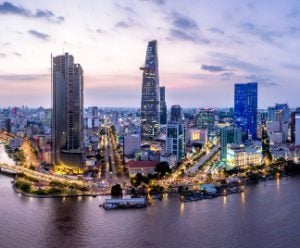
Globalization is the way forward to a secure future for Bangladesh

For having one of the world's fastest-growing economies over the last two decades, the World Bank stated that Bangladesh has an "inspiring story of growth and development." Globalization has played a key role in the country's rapid economic progress. Yet, current data indicates the country remains among the least globalized. Expanding and diversifying Bangladesh's international flows could help fuel the next stage of its economic development.
The DHL Global Connectedness Index, developed by our research team at the New York University Stern School of Business, measures countries' levels of globalization based on the size and geography of their international trade, capital, information, and population flows. The index shows that Bangladesh has strengthened its economic ties with the rest of the world over the past two decades, but that it still has a large untapped potential to grow its international activity.
Bangladesh currently ranks 147th out of 171 countries in the index, but its level of economic development, size, and proximity to foreign markets (how close it is to other major economies) imply that it could rank closer to 100.
Embracing the borderless world of international trade
Trade has been the largest driver of Bangladesh's rise in global connectedness over the last 20 years, fueled by the growth of its export-oriented ready-made garments (RMG) industry. However, the country's exports as a percentage of its GDP peaked in 2012 at 20 percent and fell all the way to 10 percent by 2020, before rebounding to 13 percent in 2022.
Cross-country comparisons imply that Bangladesh has especially large potential to grow its international trade. Among 171 countries, it ranks only 167th on the depth of its participation in international trade.
While trade is only one aspect of globalization, three challenges suggest a primary focus on trade in globalization strategy for Bangladesh. First, the country's limited export diversification, with RMG accounting for more than 80 percent of exports, elevates its sensitivity to industry-specific risks and suggests untapped opportunities in other areas. Second, limited geographic diversification also poses risks, which in the case of Bangladesh are elevated by the fact that the country straddles a geopolitical divide: 80 percent of exports go to Europe and North America, while China is the largest source of imports (26 percent of the total), some of which are used as inputs for the country's exports. Third, Bangladesh's expected "graduation" from the UN's list of least developed countries (LDCs) in 2026, while an accomplishment to celebrate, implies the loss of preferential access to export markets, especially in Europe.
These challenges are even clearer when considered relative to Vietnam, Bangladesh's closest rival in the RMG industry. Vietnam exports a much broader variety of products, and its exports are diversified across Asia, Europe, and North America. Moreover, while Bangladesh faces the threat of losing preferential market access, Vietnam has secured its access to European markets via the European Union-Vietnam Free Trade Agreement.
The most direct path to securing and expanding access to export markets is for Bangladesh to enter into new trade agreements. The country has agreements with countries producing only 37 percent of world GDP (compared to 93 percent for Vietnam). However, negotiating trade agreements is only one of several steps Bangladesh can take. A more far-reaching strategy would be to deepen the nation's participation in global value chains (GVCs). GVCs split production up across countries, enabling them to specialize in the specific production steps for which they are most competitive.
A recent joint report by the Asian Development Bank and the Islamic Development Bank highlighted that Bangladesh's participation rates in GVCs are significantly below the global average, pinpointing substantial scope for growth. The share of its trade that involves participation in GVCs was roughly 25 percent in 2021, compared to a worldwide average of 46 percent.
Fostering a Thriving Investment Climate
Growing global connectedness beyond trade could also help expand Bangladesh's participation in GVCs and accelerate its economic growth. Foreign direct investment can help boost exports and build capabilities to compete in new industries. Digital information flows also support trade growth, with e-commerce serving as a powerful driver for exports. And population flows, such as migration, can expand trade by building up interpersonal networks between countries and support economic development via the remittances that emigrants send back home.
All four categories of flows can be supported by both domestic and international policy choices. Domestic policy matters because it is the attractiveness of a country's domestic business environment that draws the interest of foreign companies and investors. International policies, in areas such as tariffs and trade facilitation, investment regulations, and visa requirements, complement domestic policies, affecting how much of a country's international potential is realized.
Bangladesh is among the 10 countries worldwide with the largest gap between its current globalization and the level predicted. Closing this gap could contribute powerfully to the country's future economic development.
This article was first published on The Daily Star.
MORE FROM THIS COLLECTION















 English
English